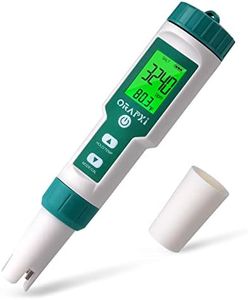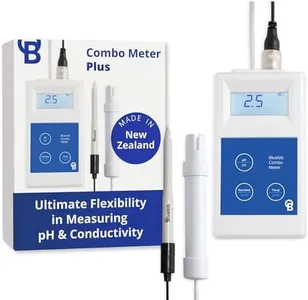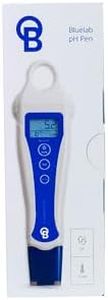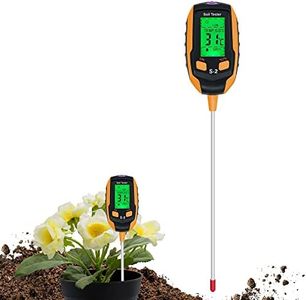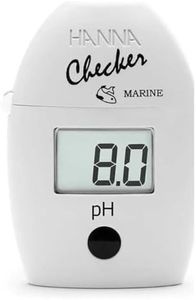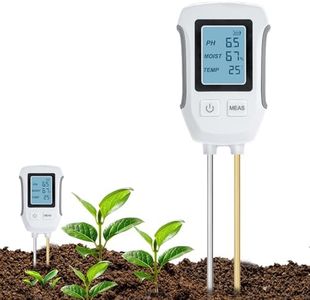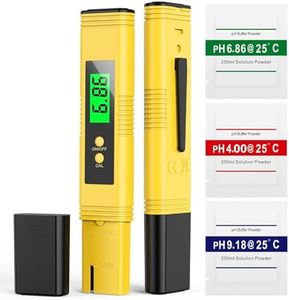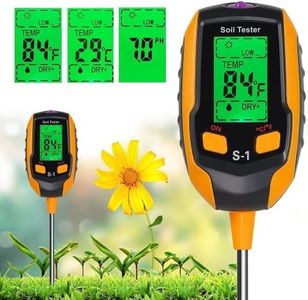We Use CookiesWe use cookies to enhance the security, performance,
functionality and for analytical and promotional activities. By continuing to browse this site you
are agreeing to our privacy policy
10 Best Ph Testers
From leading brands and best sellers available on the web.Buying Guide for the Best Ph Testers
Choosing the right pH tester can make all the difference in ensuring accuracy and ease when measuring the acidity or alkalinity of your solutions. Whether testing water for gardening, aquariums, pools, or even brewing, picking a tester that matches your needs will help you get reliable results. To select the best pH tester, you'll want to understand what features matter most and why they could be significant for your use case.Measurement RangeThe measurement range tells you the span of pH values the tester can detect, typically from a minimum to a maximum value. This is crucial because you want to make sure the tester covers the range you need for your application. For example, most water-related measurements fall between pH 6 to pH 8, but soil or chemical solutions might require a wider coverage. If you usually work with neutral substances, a smaller range may suffice, while wider ranges are better for more varied uses.
AccuracyAccuracy means how closely the readings from the tester match the real pH value. Higher accuracy is important if you need precise readings, such as for laboratory work or sensitive aquarium habitats. General household tests where exact values are less critical can be done with moderate accuracy. Devices may state their possible error as ±0.1, ±0.05, or even lower. The more sensitive your needs, the lower the error margin you should look for in a tester.
Calibration MethodCalibration is the process of setting your pH tester to known standards to ensure its readings are correct. Some testers require manual calibration, which means you need to adjust them using calibration solutions. Others offer automatic calibration, which is simpler and quicker. If you want convenience and you’re less experienced, automatic calibration is easier to handle, while manual calibration can offer precision for users willing to spend a bit more time.
Display TypeThe display type lets you see the pH value and sometimes extra details. Testers come with analog readings (a needle or color chart) or digital screens that show clear numbers. Digital displays are easier to read and leave less room for interpretation, which is ideal for beginners or anyone who needs to avoid guesswork. If visual clarity or recording exact numbers matters to you, a digital display is the way to go.
Waterproofing and DurabilityWaterproofing keeps your tester safe from accidental splashes and sometimes even allows for full immersion in liquids. Durability refers to how well the tester stands up to regular use and handling. If you'll be using your pH tester outdoors, near water, or in rough conditions, look for models designed to handle wet environments and take some knocks without breaking. For occasional indoor use, this may be less important.
Maintenance RequirementsMaintenance needs include cleaning, electrode care, and recalibration frequency. Some pH testers have replaceable probes or easier cleaning methods, which help the device last longer and maintain accuracy. If you prefer low effort, look for testers that advertise easy maintenance or infrequent calibration. If you’re willing to put in a bit more work for accuracy, more advanced testers may require extra attention.

